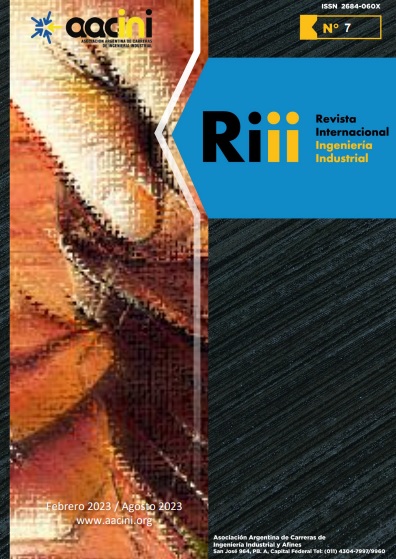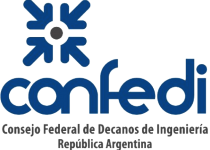Aplicación de las herramientas de calidad al rendimiento académico.
Caso de estudio: alumnos de ingeniería en la UTN-FRSC
Resumen
Las funciones evaluativas desempeñan un papel importante en la mejora de la calidad del proceso enseñanza-aprendizaje. Aunque se conocen los determinantes en el rendimiento académico de la educación superior, se desconoce el impacto de los procesos evaluativos en dicha mejora. Utilizando las técnicas de control estadístico de procesos, buscamos monitorear y evaluar la capacidad del mismo. En particular, se analizó el desempeño de los estudiantes matriculados en la materia economía y economía general, para las carreras ingeniería industrial e ingeniería electromecánica, en la Facultad Regional Santa Cruz de la Universidad Tecnológica Nacional. Se utilizaron datos correspondientes al periodo 2020 y se hizo hincapié en la tasa de desaprobados. Observamos que la tasa de desaprobados ronda entre el 19 y 25%, respectivamente, para cada una de las cohortes analizadas, siendo dicho resultado representativo para el conjunto de datos. Este novedoso hallazgo sirve de base para trabajar sobre la cuantificación de los procesos de enseñanza- aprendizaje. Así, nuestros resultados destacan la importancia central de la ejecución en línea de los gráficos de control, para seguir la marcha del proceso y tomar las medidas correctivas necesarias para lograr mejores resultados en los procesos de enseñanza-aprendizaje
Descargas
Citas
Besterfield, D. H. (2019). Control de calidad. México. Octava Edición. Pearson Educación de México, S.A. de C.V.
Bowles, S. (1970).Toward an Educational Production Function. En Education, Income and Human Capital, National Boureau of Economic Research, pp.11-70
Cattáneo, A. C., Aliverti, V., Ogean, B., De Luca, J. C., & Picco, S. J. (2022). Regreso a la presencialidad: evaluación de tres cohortes del curso de Genética General de la Facultad de Ciencias veterinarias de la UNLP. In IV Jornadas sobre las Prácticas Docentes en la Universidad Pública (La Plata, 26 al 30 de septiembre de(2022).Recuperado: https://scholar.google.com/scholar?hl=es&as_sdt=0%2C5&q=Regreso+a+la+presencialidad.+Evaluaci%C3%B3n+de+tres+cohortes+del+curso+de+Gen%C3%A9tica+General+de+la+Facultad+de+Ciencias+veterinarias+de+la+UNLP&btnG=
Chipia, J., & Santiago, C. (2020). Educación universitaria: transición y disrupción digital. Aproximación crítica. GICOS.
Coleman, J., Campbell, E., Hobson, C., McPartland, F., Mood, A., Weinfeld, F, y York, R. (1966). Equality of educational opportunity. Washington DC, U.S. Government Printing Office.
Flores Tapia, C. E., & Flores Cevallo, K. L. (2021). Pruebas no paramétricas para determinar la aleatoriedad de los datos en procesos productivos y procedimientos para calcular estadísticas en pareja. Ciencia, Economía y Negocios, 5(1), 97-118. Doi: https://doi.org/10.22206/ceyn.2021.v5i1.pp97-118
García, M. E., Gutiérrez, A. B. B., & Rodríguez-Muñiz, L. J. (2016). Permanencia en la universidad: la importancia de un buen comienzo. Aula abierta, 44(1), 1-6. https://doi.org/10.1016/j.aula.2015.04.001
Gonzales López, E. F., & Evaristo Chiyong, I. S. (2021). Rendimiento académico y deserción de estudiantes universitarios de un curso en modalidad virtual y presencial.
González, F. (2020). Rendimiento académico en materias universitarias: un análisis empírico para la Universidad Nacional de Salta (UNSa) (N°.23). Recuperado: https://scholar.google.com/scholar?hl=es&as_sdt=0%2C5&q=Rendimiento+acad%C3%A9mico+en+materias+universitarias&btnG=
Lara-Hernández, C., Melo-González, R., Herrera-Ruiz, D. A., & Valdez-Gómez, J. A. (2011). Control estadístico de procesos en tiempo real de un sistema de endulzamiento de gas amargo. Metodología y resultados. Tecnología, Ciencia, Educación, 26(2), 57-74.
Minitab (2016).Introducción a Minitab Version 17.
Urrego, M. L. P., & Zúñiga, J. S. P. (2013). Cuantificación de la capacidad de proceso para datos cualitativos. Universidad de Ibagué, Ibagué. Recuperado de https://scholar.google.com/scholar?hl=es&as_sdt=0%2C5&q=Cuantificaci%C3%B3n+de+la+capacidad+de+proceso+para+datos+cualitativos&btnG=


































































